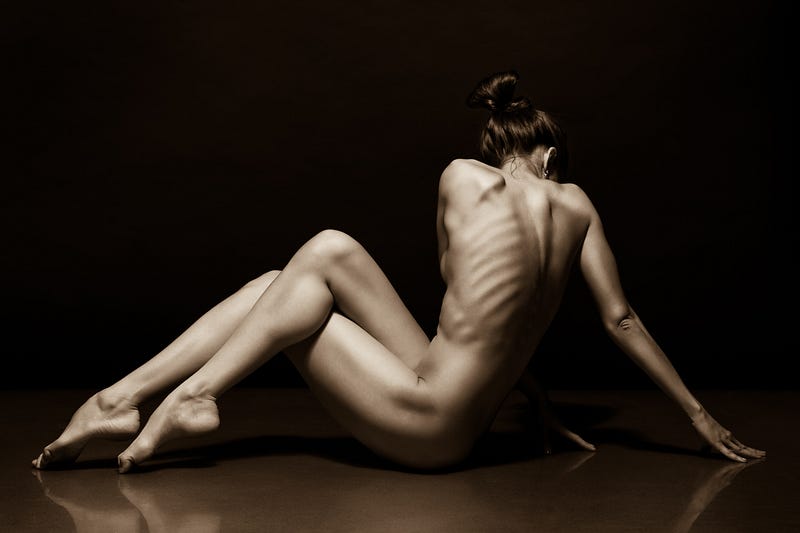Understanding Male Attraction: The Myths of Ideal Body Types
Written on

In 2009, supermodel Kate Moss famously stated, “Nothing tastes as good as skinny feels,” reflecting a pervasive belief in American culture that equates slimness with attractiveness. Her success as a model was undeniably tied to her thin physique, which arguably defined her career.
Moss began modeling in the 1980s, gaining attention for her topless shoots at just 14 years old. In hindsight, such practices raise ethical concerns about the sexualization of minors. By the 1990s, she had solidified her status as a leading supermodel, representing a trend where extreme thinness was idealized, epitomized by the “heroin chic” look.
This thin model trend originated with icons like Lesley “Twiggy” Hornby in the 1960s, leading to a gradual decrease in model sizes. By the time of Moss’s rise, media showcased increasingly underweight figures, with some models reportedly subsisting on minimal diets. At 5'7” and weighing only 104 pounds, Moss had a BMI of 16.3, categorizing her as significantly underweight.
Her motto sparked considerable backlash as America grappled with the consequences of this fixation on thinness, including a surge in eating disorders.
Thin & Sexy: Are They Truly Synonymous? The notion that “skinny equals sexy” is deeply ingrained, influencing young girls and resulting in widespread issues of self-esteem and body image. Many women obsess over their weight, letting scales dictate their worth. Eating disorders remain prevalent, affecting all demographics, including men.
Women have justifiably criticized the narrow portrayal of beauty in the media, which has perpetuated the belief that only a specific body type can attract male partners. But what if the idea that thinness is synonymous with desirability is unfounded?
Could it be that men are attracted to a broader range of body types? Is the so-called “ideal” body more about marketing than actual appeal? This inquiry leads us to explore the research behind male attraction.
Big Beautiful Bodies A 2009 study in The Journal of Sex Research reveals a nuanced view: while some men are drawn to ultra-thin figures, others appreciate a variety of body types. Researchers surveyed men from fat-acceptance movements alongside a control group, discovering that those in the former group rated larger bodies as attractive, yet acknowledged a range of preferences.
Another study indicated that men who favored diverse body types still preferred a hip-to-waist ratio of 7, which appears to be a global standard linked to health indicators. Many theorize that men are inclined toward slimmer women with this ratio, interpreting it as a sign of youth and fertility.
However, this perspective doesn’t capture the entirety of male preferences.
What Porn Teaches Us Adult film data provides significant insights into human attraction. In 2013, researcher Jon Millward examined the profiles of thousands of adult film actresses, revealing that the average porn star weighs 117 pounds, contradicting the notion of an ultra-thin ideal.
Additionally, analyses of internet porn consumption found that extremely slender women are scarce in male-targeted content, suggesting that if men genuinely preferred ultra-thin figures, such content would dominate their searches. Yet, evidence indicates men enjoy a diverse array of body types.
Cross-cultural research shows that men are not attracted to BMIs below 19, favoring those between 22.8 and 24.8, which aligns with the normal weight range. Moreover, when tasked with modeling ideal body types, men and women’s preferences closely aligned, both indicating a preference within the normal range rather than the extreme thinness represented by models like Kate Moss.
Decades of Misrepresentation and Lies The research suggests that the long-standing media portrayal of beauty does not accurately reflect male preferences. In fact, men show little interest in the ultra-thin models that dominated the 1990s. The average porn star they gravitate towards is more aligned with typical body standards.
This revelation is affirming for those who have long felt that the idealized body types presented in media do not resonate with the majority of men. The appeal lies in diversity, rather than a singular, narrow image of beauty.
Ultimately, the issue isn’t with thin bodies but rather the limited representation in media over the years. It’s worth noting the minimal difference in weight between icons like Marilyn Monroe and Twiggy—only nine pounds.
This discrepancy highlights how media perceptions of beauty can diverge significantly from what many men find appealing. As society evolves, it’s crucial that diverse representations of human bodies become the norm, rather than the exception.
Thank you for reading. If you found this insightful, consider exploring more on this topic through my publication, The Science of Sex.
Full disclosure: This post contains affiliate links, and as an Amazon Associate, I may earn a small commission from any purchases made through these links.